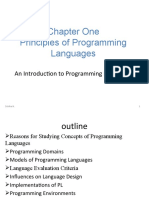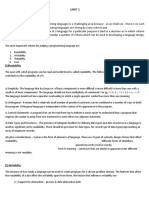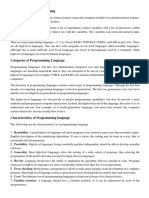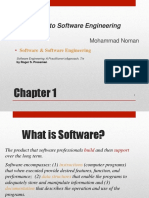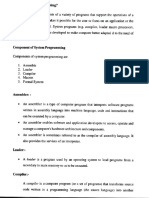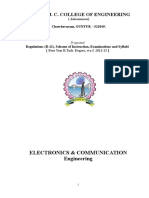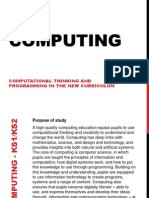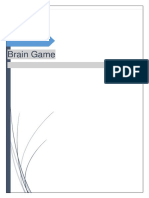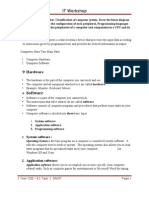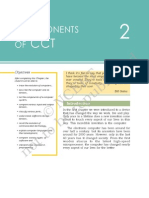0% found this document useful (0 votes)
20 views35 pagesL01 Introduction
The document discusses programming languages, outlining three main models: imperative, functional, and logic. It covers the history of programming design methodologies, language evaluation criteria, and implementation methods. Key aspects include readability, writability, reliability, and the trade-offs involved in language design.
Uploaded by
elylaurabdCopyright
© © All Rights Reserved
We take content rights seriously. If you suspect this is your content, claim it here.
Available Formats
Download as PDF, TXT or read online on Scribd
0% found this document useful (0 votes)
20 views35 pagesL01 Introduction
The document discusses programming languages, outlining three main models: imperative, functional, and logic. It covers the history of programming design methodologies, language evaluation criteria, and implementation methods. Key aspects include readability, writability, reliability, and the trade-offs involved in language design.
Uploaded by
elylaurabdCopyright
© © All Rights Reserved
We take content rights seriously. If you suspect this is your content, claim it here.
Available Formats
Download as PDF, TXT or read online on Scribd
/ 35
